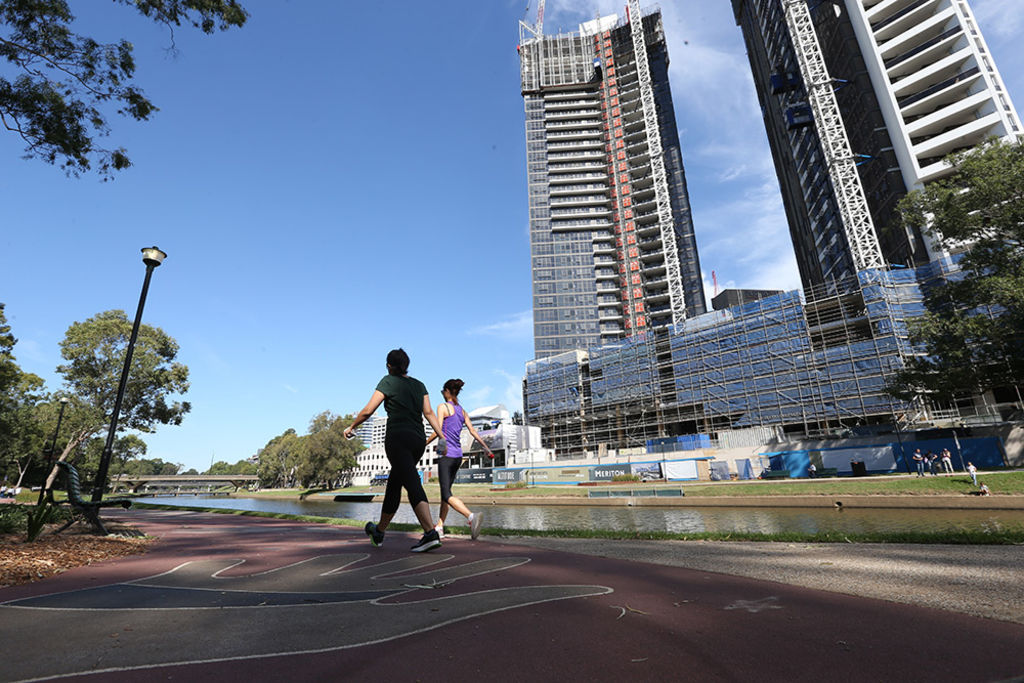
Is Sydney's love affair with new units threatening future of office space?
Sydney needs an additional 817,000 jobs by 2036, but planning experts are concerned that a city focused on residential developments has overlooked where everyone is going to work.
The Greater Sydney Commission’s District Plans released on Monday anticipate an extra 32,000 jobs will be located around the new second airport at Badgerys Creek, in the western suburbs, and there will be a continued concentration of jobs in the CBD and the other satellite centre of Parramatta, also in the city’s west.
But Sydney’s preoccupation with building residential highrises is counter-productive for a city needing to grow jobs at such a fast rate, Tract Consultants senior town planner Georgia Sedgmen said. The latest jobs estimate is up from a previous projection of 689,000.
“Commercial land is less desirable at the moment than residential for developers … It’s a problem and attention needs to be paid to where we’ll put a phenomenal amount of jobs,” she said.
There has been a shift in Sydney to land zoned B4 – a ‘mixed use’ zoning that aims to provide both residential and commercial property. Often, developers provide a modest amount of retail on the ground floor “underneath a tower of residential properties … it’s not properly mixed use,” she said.
Without more attention given to what the right mix is in ‘mixed use’ developments, she warned “the only way to preserve land for future jobs is the B3 zoning”.
This stricter zoning is specifically ‘commercial core’ and does not allow residential homes to be built. The requirement for what can specifically be allowed in each zoning is determined by individual councils’ local environmental plans.
 A proposed 43-storey building in Parramatta will have a mixture of apartments, offices and shops, but others won’t have enough of a mix, some planners say. Image: Supplied
A proposed 43-storey building in Parramatta will have a mixture of apartments, offices and shops, but others won’t have enough of a mix, some planners say. Image: Supplied
Property Council NSW executive director Jane Fitzgerald said commercial development “is important if Sydney wants to compete with cities such as Singapore, Hong Kong and Melbourne”.
“The fact is that sometimes strategic planning at a local level is absent or lacking teeth and this means that zoning and planning can occur in a piecemeal approach rather than with a forward thinking, strong vision,” she said.
In particular, she pointed to a “worrying” situation in Parramatta and the CBD with some of the lowest office vacancy rates. Parramatta has the lowest office vacancy rate in 16 years and “no A-grade stock available”.
The District Plans noted research from the Department of Planning and Environment showing “there is a lack of new premium commercial supply in Parramatta City and strong pressure for residential development in the commercial core.”
A City of Parramatta spokesman said the council had identified the lack of commercial zoning and the heavy development of residential real estate in B4 zones as a “potential issue”.
“Experience has shown that while B4 zoning permits commercial uses, the predominant use is residential, usually in the form of apartment buildings,” the spokesman said.
“The approach taken by Council in its draft planning proposal for the Parramatta CBD is to increase the area of land zoned B3, require a minimum amount of commercial space be included within new buildings in the B4 zone, and prohibit serviced apartments in new buildings in the B3 zone.”
Rents for Sydney-wide office space jumped 19.7 per cent in the 12 months to September. In some cases, tenants pay in excess of $1200 a square metre for prime office space.
Melbourne has also been tackling the issue of maintaining the city’s commercial core and have moved to allow developers to build taller apartment towers in the CBD as long as they provide “public amenities”.
But Colliers International national director of consultancy Andrew Graham said forcing a higher commercial percentage onto Sydney’s developers could restrict development feasibility.
“The real focus needs to be on higher density around transport nodes and also closer to large worker catchments in order to reduce travel times and congestion. Increased density in key locations and good public transport infrastructure are critical.”
And Chris Johnson, chief executive of the developer lobby group Urban Taskforce, warned commercial-only cores too often ended up with “not much happening there at all” in terms of development.
“You can’t zone something commercial and expect the jobs to move there. The best way to get jobs is to make [an area] more cosmopolitan and to get people living in them,” he said.










